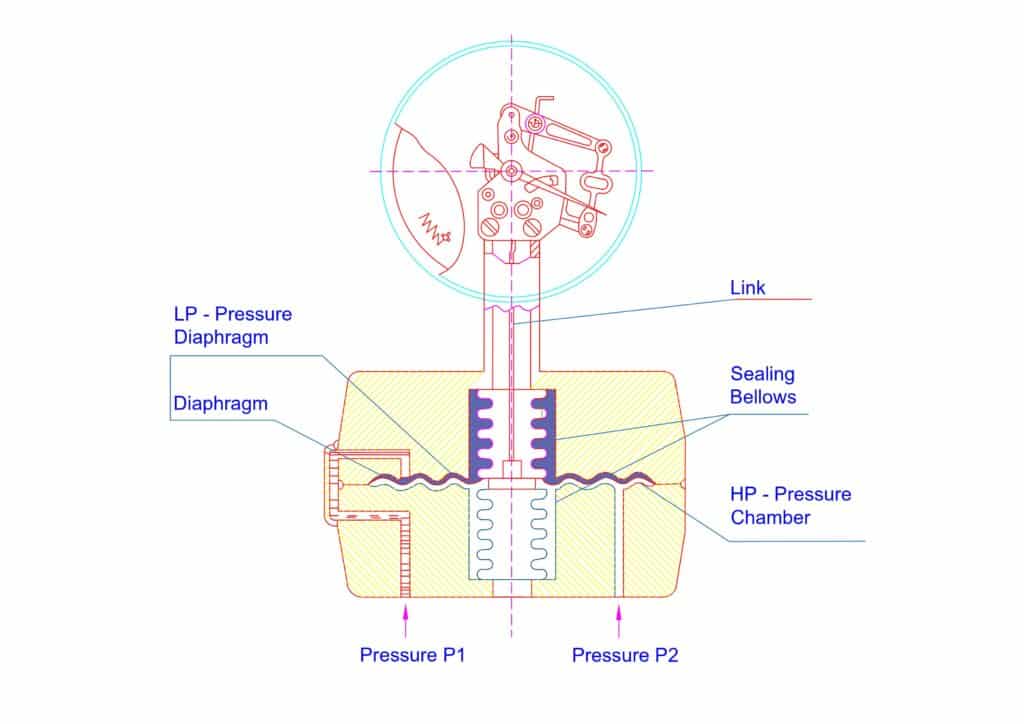The differential pressure gauge principle is based on measuring the difference between two pressures. As its name suggests, the differential pressure measures the two pressures and indicates the pressure difference.
Differential pressure gauges are suitable for measuring the following quantities.
- Monitoring of filter contamination
- Monitoring of clogging of bags in bag dust collector
- Over-pressure measurement in the clean rooms
- Flow measurement of gaseous and liquid media
Function of a differential pressure gauge
Differential pressure gauge has two sealed medium chambers. Both the chambers are separated by measuring elements. If both chambers’ pressure is the same, then the measuring elements do not experience pressure, and the DP gauge does not show any deflection.
In differential pressure gauges, different pressure elements like, diaphragm element, capsule element, Bourdon tube, etc are used. This enables scale ranges of 0 – 0.5 mbar up to 0 – 1,000 bar.

If there is a pressure difference in both the chambers, the pressure exerted on one measuring element is more than the pressure exerted on another chamber element. In this condition, the DP gauge shows deflection.
In the case of high static pressure, we can directly measure the low differential pressure. The diaphragm element provides a high overload capability. The maximum static pressure and overload capability need to be observed on the L and H side. Transmission of the measuring element movement and pressure indication is the same as with the already described overpressure gauges in the majority of cases.
The scale ranges are between 0 ~ 16 mbar and 0 ~ 25 bar in accuracy classes from 0.6 to 2.5.
Area Of Application
- Monitoring filter health
- Flow Rate Measurement
- Detecting Scale Buildup
- Detecting Leaks
- Filling level measurement (in enclosed containers)
Read Next :